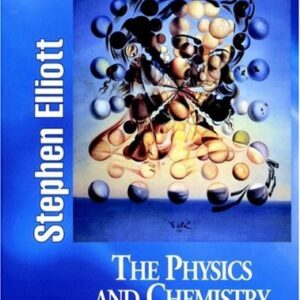This book deals with new bioceramics for new applications. Current and future applications are considered in terms of chemical composition, structure and properties. It explains the processes that (from the point of view of solid state and sol-gel chemistry) lead to better bone implants and other medical devices. The book is structured to make it useful for students of biomaterials, but also as a reference for specialists interested in specific topics. Didactic figures and schemes make it easy for under-graduates to understand and the extended bibliography is indispensable for researchers. The introductions to each chapter deal with some common fundamental concepts thus allowing the comprehension of each one independently. The first chapter describes biological hard tissues in vertebrates, from the point of view of mineralization processes. Concepts of hard tissue mineralization are employed to explain how nature works and an overview of artificial alternatives is provided. Chapter 2 details several synthesis methodologies used to prepare nano-apatites. The aim is to obtain artificial carbonated calcium deficient nano-apatites that resemble, as closely as possible, natural biological apatites. A review on synthesis methods is collected in the bibliography. Chapter 3 describes, in-depth, the biomimetic processes used to prepare apatites similar to biological ones. It focuses on hard tissue-related biomimetism and deals with nanoceramics obtained as a consequence of biomimetic processes. Valuable information about the most widely used biomimetic solutions and evaluation methods are included. The final chapter provides an overview of the current and potential clinical applications of apatite-like biomimetic nanoceramics, intended as biomaterials for hard tissue repair, therapy and diagnosis.
?
Author Information
Maria Vallet-Regi? studied Chemistry at the Universidad Complutense de Madrid (UCM) and received her PhD at the same University in 1974. She is Professor of Inorganic Chemistry and Head of the Department of Inorganic and Bioinorganic Chemistry at the Faculty of Pharmacy (UCM). Her current research field is solid state chemistry, covering aspects of synthesis, characterisation and reactivity in oxides and bioceramics. Daniel Arcos completed his PhD on the synthesis and evaluation of bioactive glasses and glass-ceramics in 2002. He has worked previously on structural studies of silicon containing hydroxyapatites. Currently, his research is focused on nanostructured materials for biomedical applications.

![[PDF] Biomimetic Nanoceramics in Clinical Use: From Materials to Applications (RSC Nanoscience and Nanotechnology) Maria Vallet-Regi, Daniel A. Arcos Navarrete](https://pdfelite.com/wp-content/uploads/2024/04/0f7585e1b226a999cb021a2d166bbb86-d.jpg)




Reviews
There are no reviews yet.